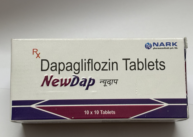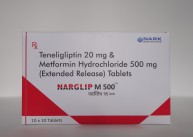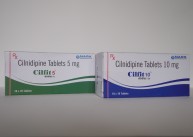NEWDAP
Dapagliflozin is used along with diet, exercise, and usually with other glucose-lowering medications, to improve glycaemic control in adults with type 2 diabetes. Dapagliflozin, in addition to other SGLT2-inhibitors, was shown to reduce the rate of decline in kidney function and kidney failure in non-diabetic and type 2 diabetic adults when added to the existing treatment regimen.
Dapagliflozin is also considered as an option for people with heart failure with reduced ejection fraction with a LVEF <40%. It can be given regardless of current diabetes status, in addition to standard medical therapy. Recent studies have indicated that the use of Dapagliflozin and other medications from the SGLT-2 inhibitor class can reduce the risk of worsening heart failure, death, and hospitalization from cardiovascular disease.
Mechanism of action
Dapagliflozin is used along with diet, exercise, and usually with other glucose-lowering medications, to improve glycaemic control in adults with type 2 diabetes. Dapagliflozin, in addition to other SGLT2-inhibitors, was shown to reduce the rate of decline in kidney function and kidney failure in non-diabetic and type 2 diabetic adults when added to the existing treatment regimen.
Dapagliflozin is also considered as an option for people with heart failure with reduced ejection fraction with a LVEF <40%. It can be given regardless of current diabetes status, in addition to standard medical therapy. Recent studies have indicated that the use of Dapagliflozin and other medications from the SGLT-2 inhibitor class can reduce the risk of worsening heart failure, death, and hospitalization from cardiovascular disease.
Mechanism of action
Dapagliflozin inhibits subtype 2 of the sodium-glucose transport proteins (SGLT2), which are responsible for at least 90% of the glucose reabsorption in the kidney. Blocking this transporter mechanism causes blood glucose to be eliminated through the urine. In combination with metformin, Dapagliflozin at standard treatment dose of 10 mg daily lowered HbA1c by 0.54-0.84% (5.9-9.3 mmol/mol) when compared to metformin monotherapy in patients with inadequately controlled type 2 diabetes and normal renal function.
Its protective effects in heart failure are attributed primarily to haemodynamic effects, where SGLT2 inhibitors potently reduce intravascular volume through osmotic diuresis and natriuresis. This consequently may lead to a reduction in preload and afterload, thereby alleviating cardiac workload and improving left ventricular function.






